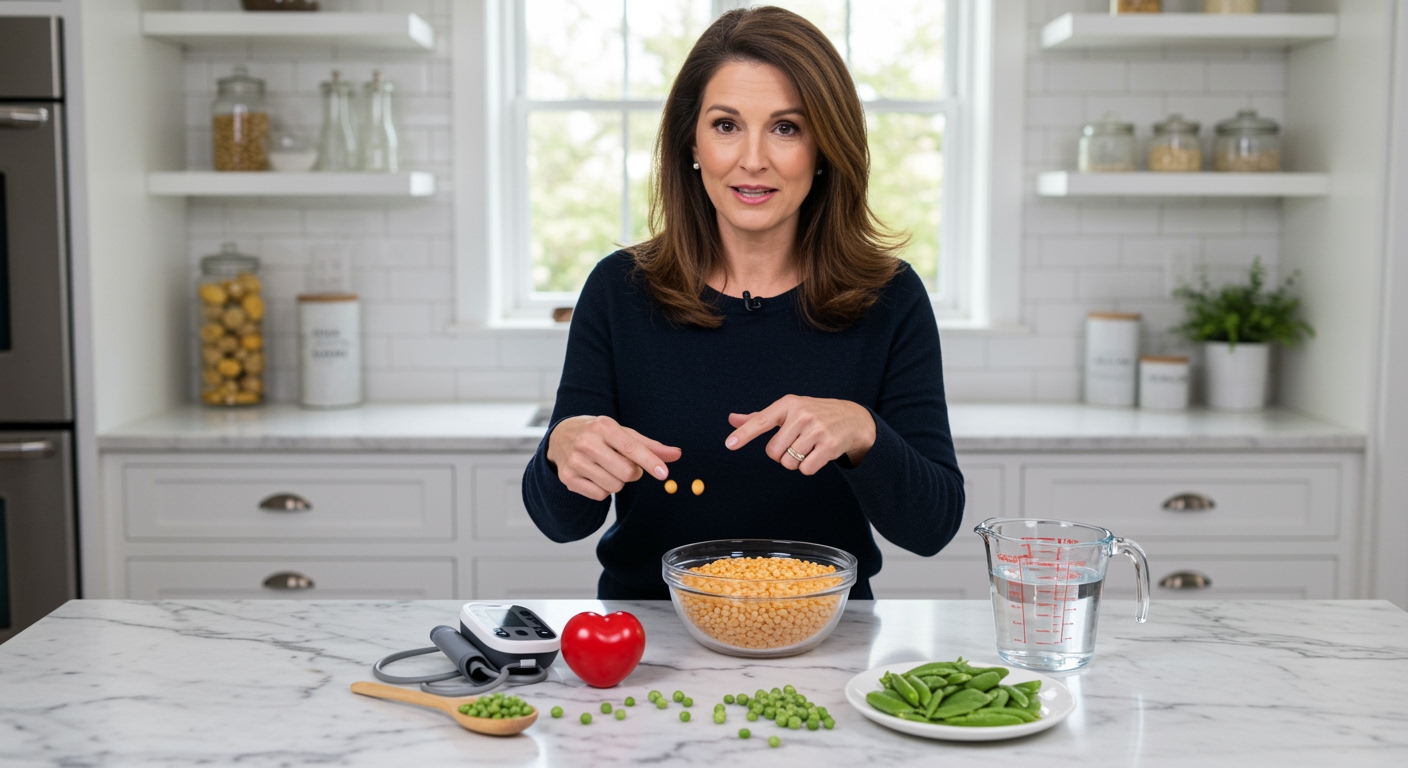✪ Key Takeaway: Lamb can be safe for hypertensive patients when consumed in moderation, prepared without excess salt, and chosen as lean cuts.
Introduction
Your doctor just told you that your blood pressure is too high, and now you are staring at that beautiful lamb chop in your refrigerator wondering if you should throw it away.
You might be asking this question because lamb has a reputation for being high in sodium and saturated fat, two things that doctors often warn hypertensive patients to avoid.
Hi, I am Abdur, your nutrition coach, and today I am going to explain whether lamb is truly safe for people with high blood pressure and how you can enjoy it without compromising your health.
What Makes Lamb Different From Other Red Meats?
Lamb contains about 294 milligrams of sodium per 100 grams when prepared without added salt, which is actually lower than many processed meats.
The saturated fat content in lamb varies significantly depending on the cut you choose and how you prepare it.
Lean cuts like lamb leg or loin contain approximately 2.3 grams of saturated fat per 100 grams, while fattier cuts like lamb shoulder can contain up to 8 grams.
Your body processes lamb protein similarly to other red meats, but lamb provides important nutrients like vitamin B12, iron, and zinc that support overall cardiovascular health.
The key difference lies in how lamb is typically prepared in many cuisines, often with heavy salt rubs, marinades, or processed into sausages that dramatically increase sodium content.
✪ Fact: Fresh lamb naturally contains less sodium than most deli meats and processed beef products.
How Does Lamb Affect Blood Pressure Directly?
Research shows that lean red meat consumption does not automatically raise blood pressure when consumed as part of a balanced diet.
The real problem occurs when people eat lamb that has been heavily salted, processed, or prepared with high-sodium seasonings and sauces.
Your kidneys regulate blood pressure by controlling how much sodium and water your body retains, so excessive sodium from any source can cause problems.
Studies indicate that the protein quality in lamb can actually support healthy blood pressure by providing amino acids that help your blood vessels function properly.
The iron content in lamb helps maintain healthy red blood cell production, which supports efficient oxygen transport and can indirectly benefit cardiovascular health.
However, eating large portions of any red meat regularly may contribute to inflammation in some people, which can negatively impact blood pressure over time.
✪ Pro Tip: Monitor your blood pressure for a few days after eating lamb to see how your body responds individually.
Which Cuts Of Lamb Are Best For Hypertensive Patients?
The lamb leg is your best choice because it contains the least amount of saturated fat and can be prepared in heart-healthy ways.
Lamb loin chops offer another excellent option with moderate fat content and the ability to portion control easily.
Avoid lamb shoulder, ribs, and ground lamb unless you can find extra-lean versions with less than 10% fat content.
Always trim visible fat before cooking, as this simple step can reduce saturated fat content by up to 40 percent in some cuts.
Choose grass-fed lamb when possible because it typically contains higher levels of omega-3 fatty acids and lower levels of saturated fat compared to grain-fed alternatives.
Portion size matters more than the specific cut in many cases, so stick to 3-4 ounce servings regardless of which cut you choose.
✪ Note: A 3-ounce serving of lean lamb provides about 25 grams of high-quality protein with essential amino acids.
What Cooking Methods Keep Lamb Heart-Healthy?
Grilling, roasting, and broiling allow excess fat to drip away from the meat, making these the healthiest cooking methods for lamb.
Season your lamb with herbs like rosemary, thyme, and oregano instead of salt-based rubs or marinades.
Marinate lamb in lemon juice, vinegar, or wine-based marinades that add flavor without sodium while potentially helping to tenderize the meat.
Avoid frying, braising in salty broths, or using pre-made seasoning packets that often contain hidden sodium and preservatives.
Cook lamb to an internal temperature of 145°F for medium-rare, which preserves nutrients while ensuring food safety.
Pair your lamb with potassium-rich vegetables like spinach, sweet potatoes, or Brussels sprouts to help counteract any sodium effects.
Let cooked lamb rest for 5 minutes before slicing to retain juices and prevent the need for high-sodium sauces.
✪ Pro Tip: Create a herb crust using fresh garlic, rosemary, and olive oil for maximum flavor without any added sodium.
How Often Can Hypertensive Patients Eat Lamb Safely?
Most nutrition experts recommend limiting red meat consumption to 2-3 servings per week for people with high blood pressure.
This means you can safely enjoy lamb once or twice weekly as part of a balanced diet that emphasizes vegetables, fruits, and whole grains.
Your individual response to lamb may vary based on your medication regimen, overall diet quality, and other health conditions you may have.
Track your blood pressure readings for several days after eating lamb to identify any patterns or concerning changes.
Consider alternating lamb with heart-healthy proteins like fish, poultry, legumes, and plant-based options throughout the week.
If you notice consistent blood pressure spikes after eating lamb, reduce frequency to once weekly or consult with your healthcare provider about your individual tolerance.
✪ Fact: The DASH diet allows for small amounts of lean red meat while still effectively lowering blood pressure.
The Bottom Line
Lamb can be part of a heart-healthy diet for people with high blood pressure when you choose lean cuts, prepare them without excess salt, and eat appropriate portions.
The key to enjoying any food with high blood pressure is moderation and mindful preparation, not complete elimination.
I would love to hear about your experience with lamb and blood pressure management, so please share your questions, concerns, or success stories in the comments below.
References
At NutritionCrown, we use quality and credible sources to ensure our content is accurate and trustworthy. Below are the sources referenced in creating this article:





